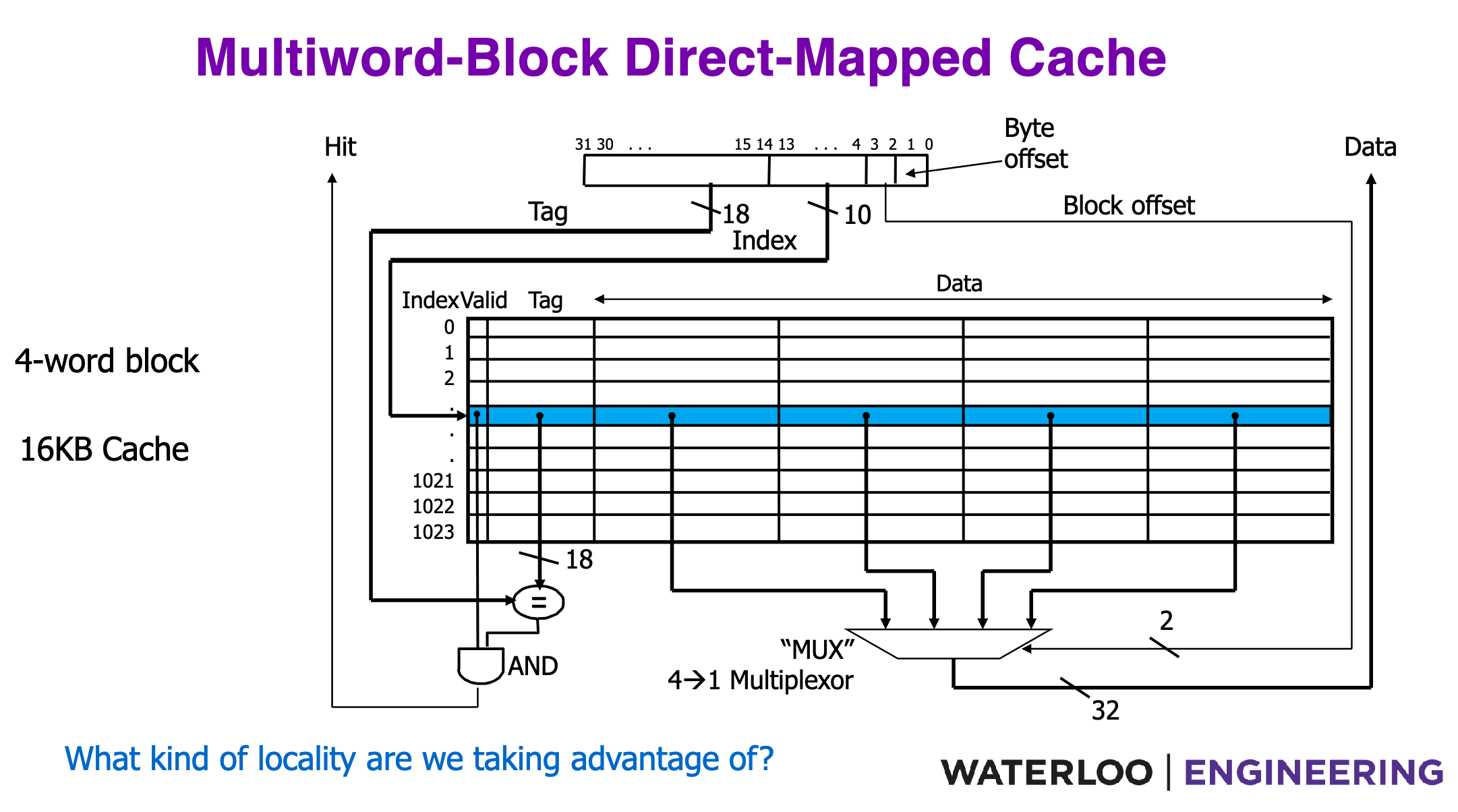Direct Mapped Cache
-
Each mem address is mapped to one specific block of cache.
-
Block may be of different size (1 byte, 2 byte, word-length etc). We are using 4-word wide blocks (16 bytes)
-
Cache area = block width * height
-
Block is the unit of transfer between cache and memory. But the size of data read into registers depends on the instruction (
lb, lh, lw).
-
Cache is smaller than memory ⇒ multiple memory addresses may be assigned the same cache block. How do we distinguish? We use tags.

-
Since each word is 4 bytes, we can go within the offset.
- The 2 MSBs are block offset.
- The 2 LSBs are byte offset within the respective block.
-
In hex, each character is 4 bits ⇒ the right-most character is the offset.
-
Then index.

- Validity bit specifies wether the value in cache is valid.
Issues with Direct Mapping
- This cache takes advantage of temporal locality. An address which has been R/W is likely to be R/W again.
- Conflict Misses: Since multiple addresses may be assigned the same cache block, and if those addresses are used in succession, they keep kicking each other out.
- What if different blocks of data could fit within the same cache block.
Fully Associative Cache
-
Address fields: tag remains same, offset is same, no index (tag enlarges).
-
Blocks can go to any row.
-
We compare tags for all entries in parallel.
-
No conflict misses since block’s won’t kick each other out.
-
But, need a lot of hardware comparators to perform comparisons in parallel.
N-Way Set Associative Cache
- Address fields: tag and offset are same.
- Index points to a set of blocks.
- So once we draw out the blocks from the set, we must compare tag with each block.
Other
- Block replacement policy.
- Types of cache misses.
- Block size tradeoff.
- Prefetching.
- Victim Buffer.
- Cost of tags.
- Write Policy: write through, write back.
- Cache design.
- L2 cache.